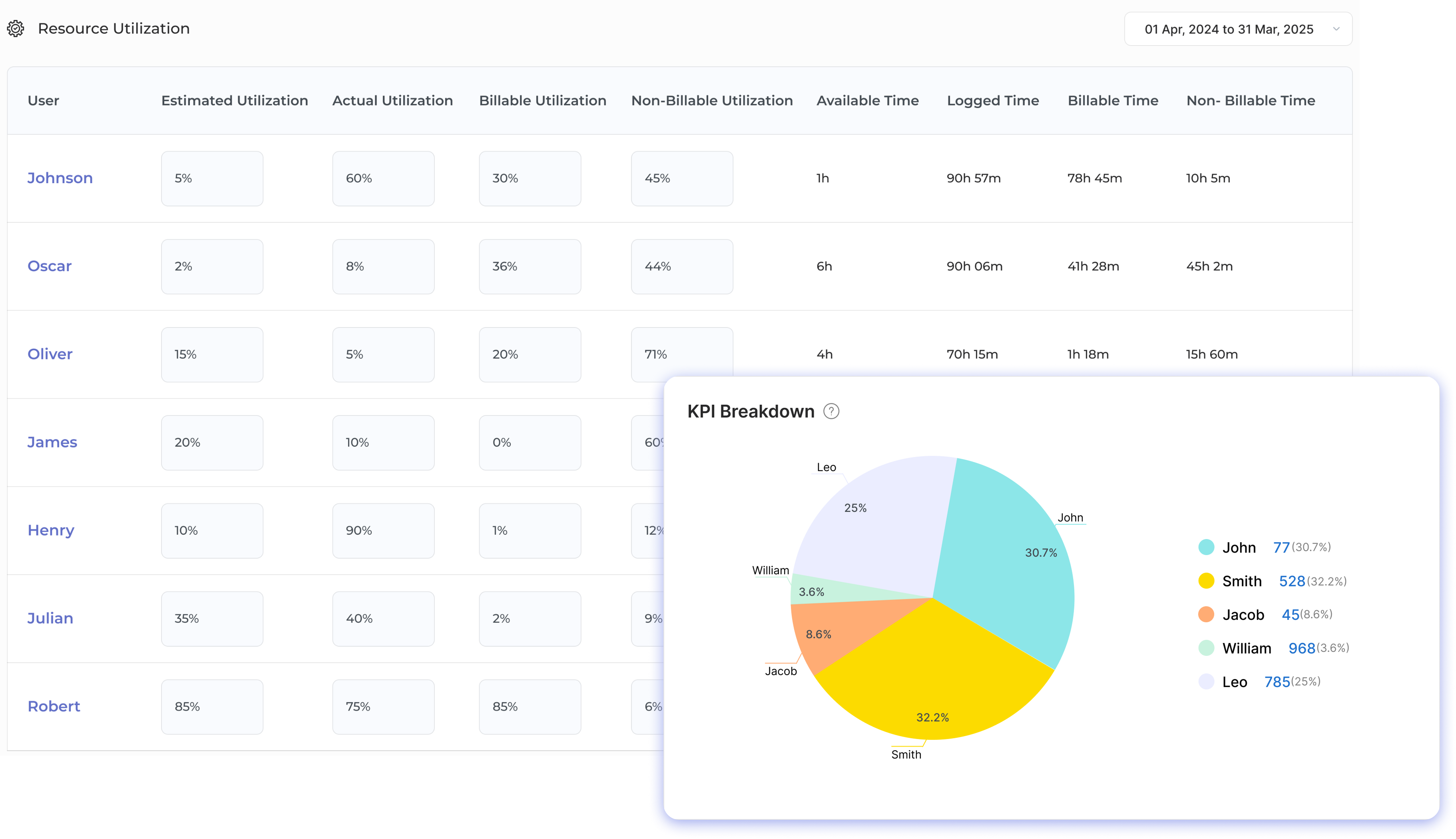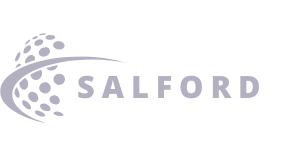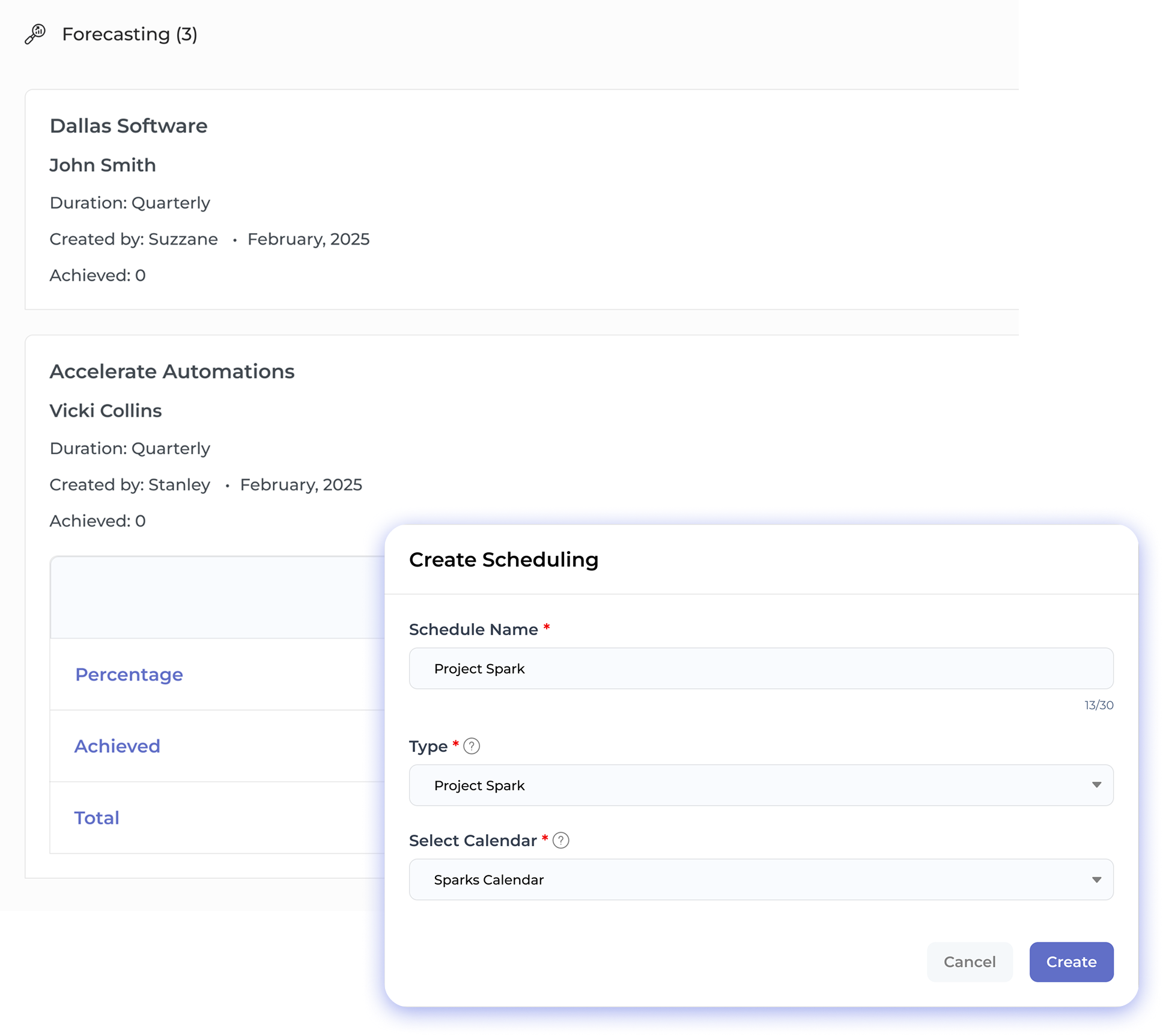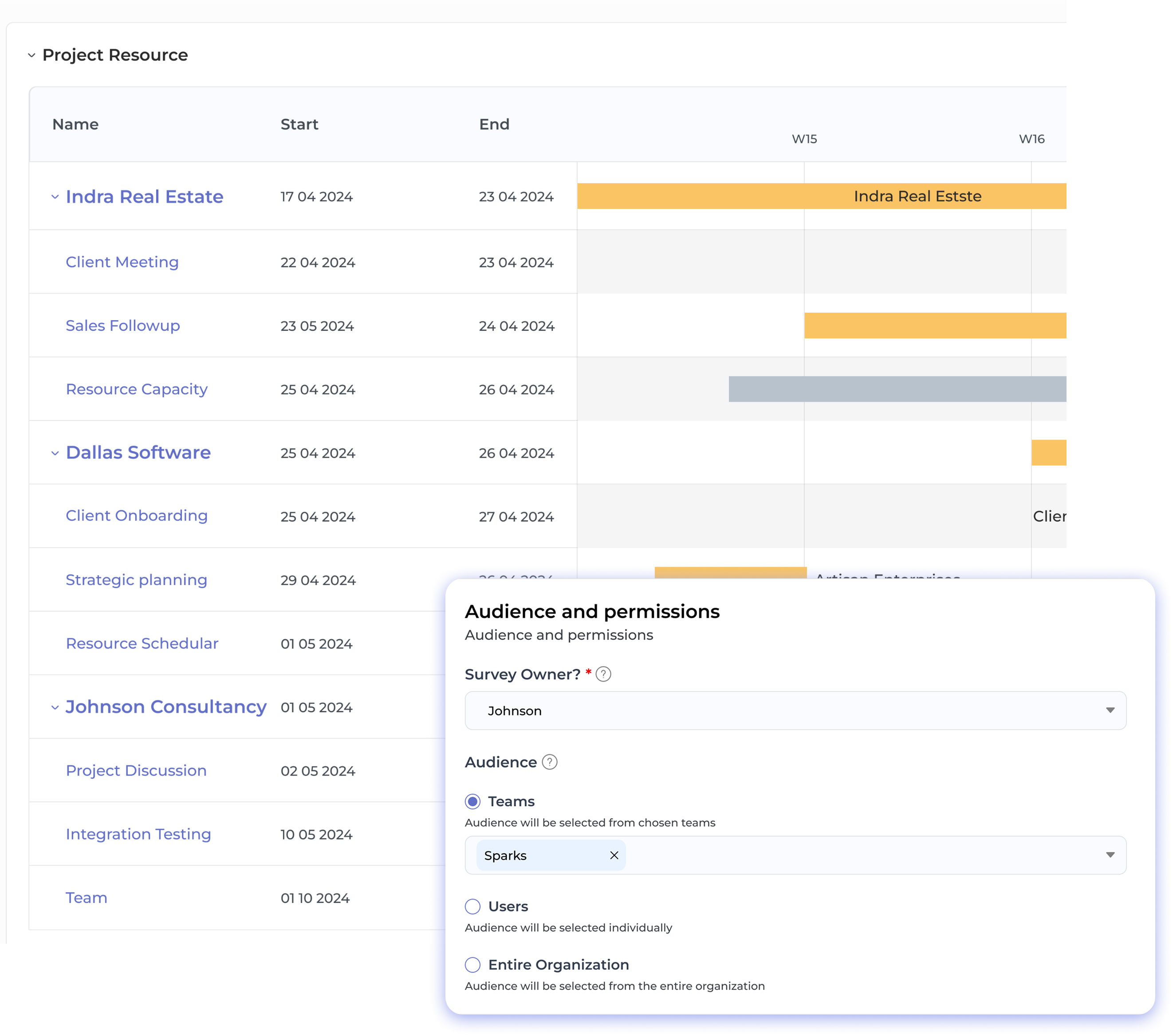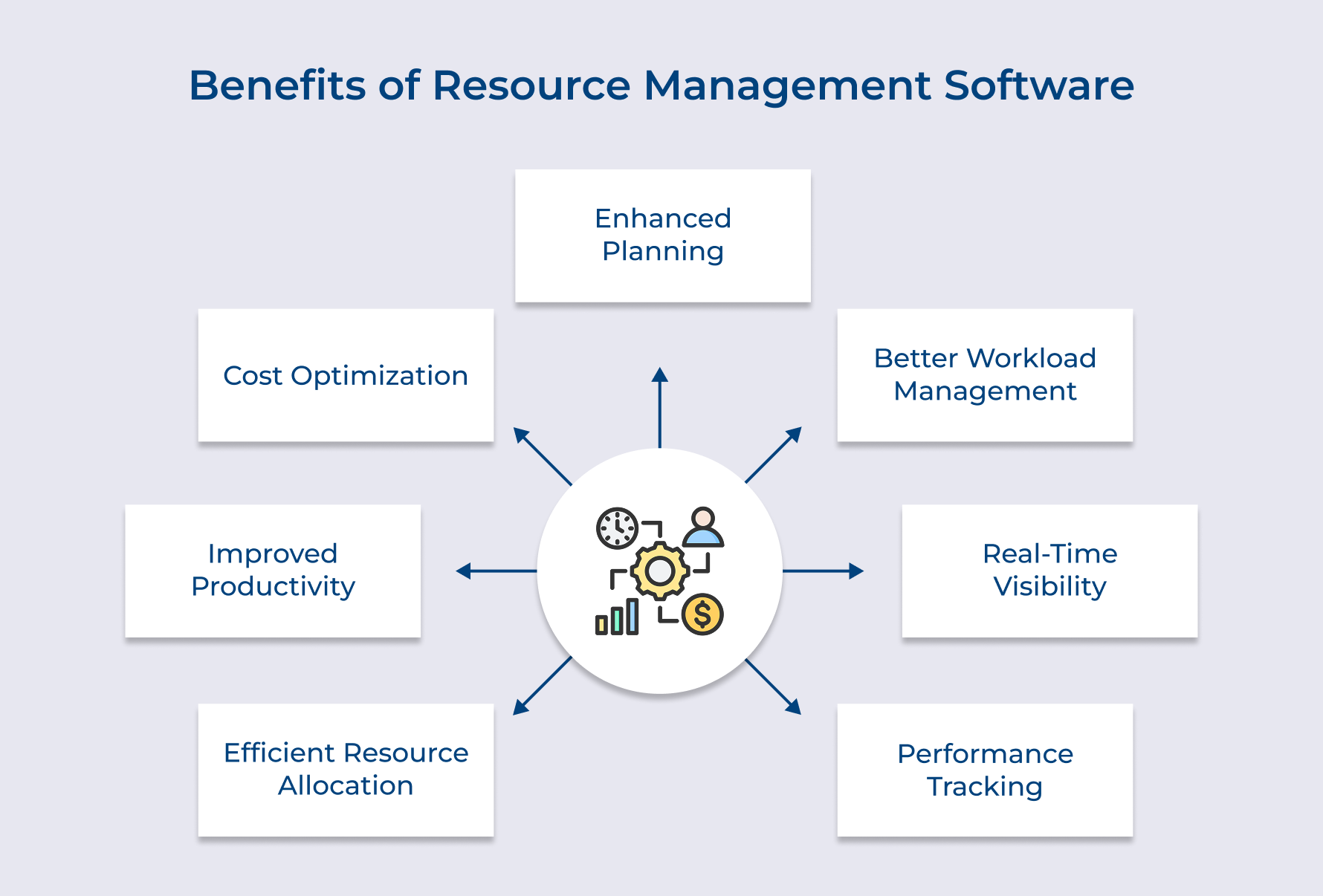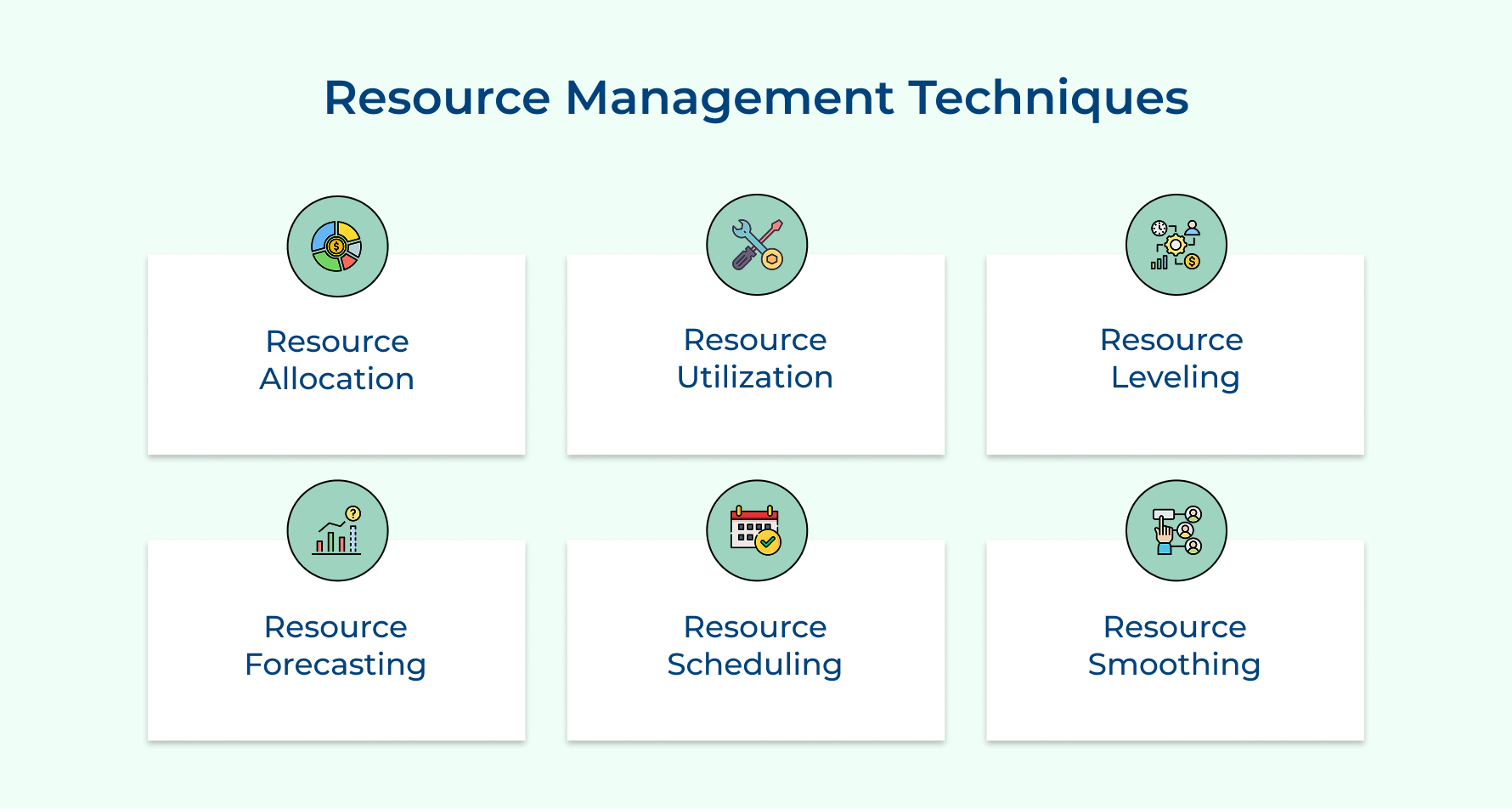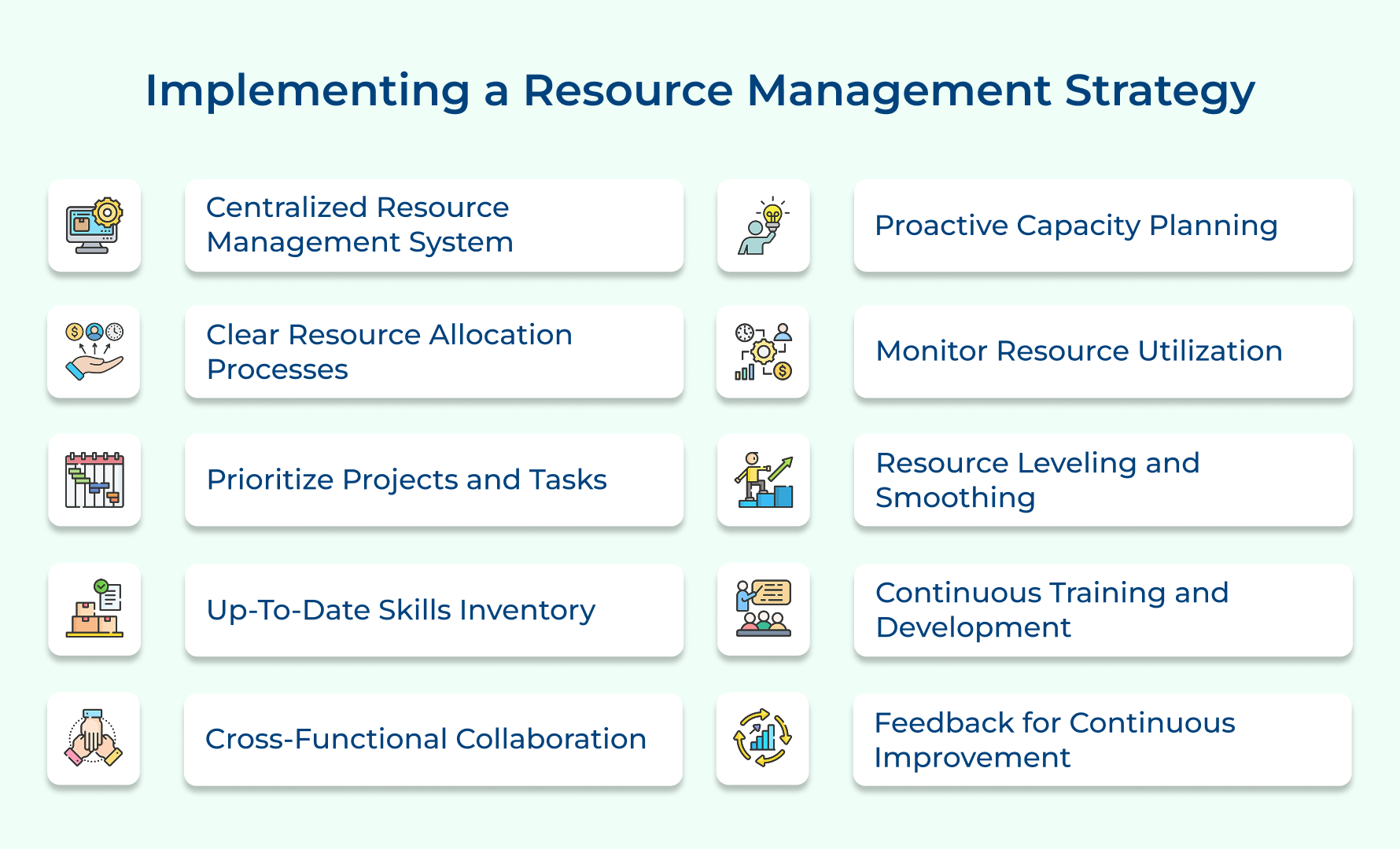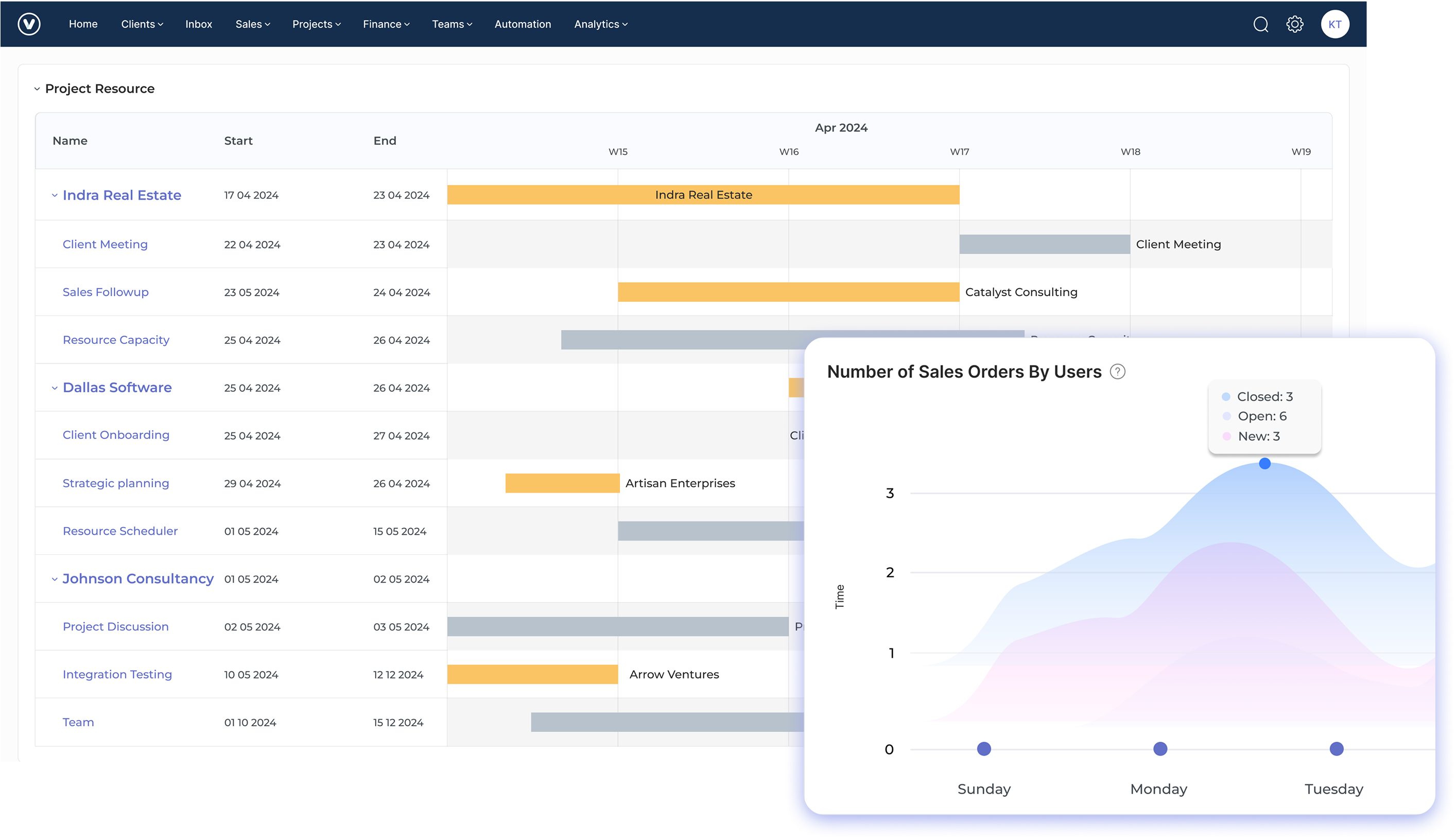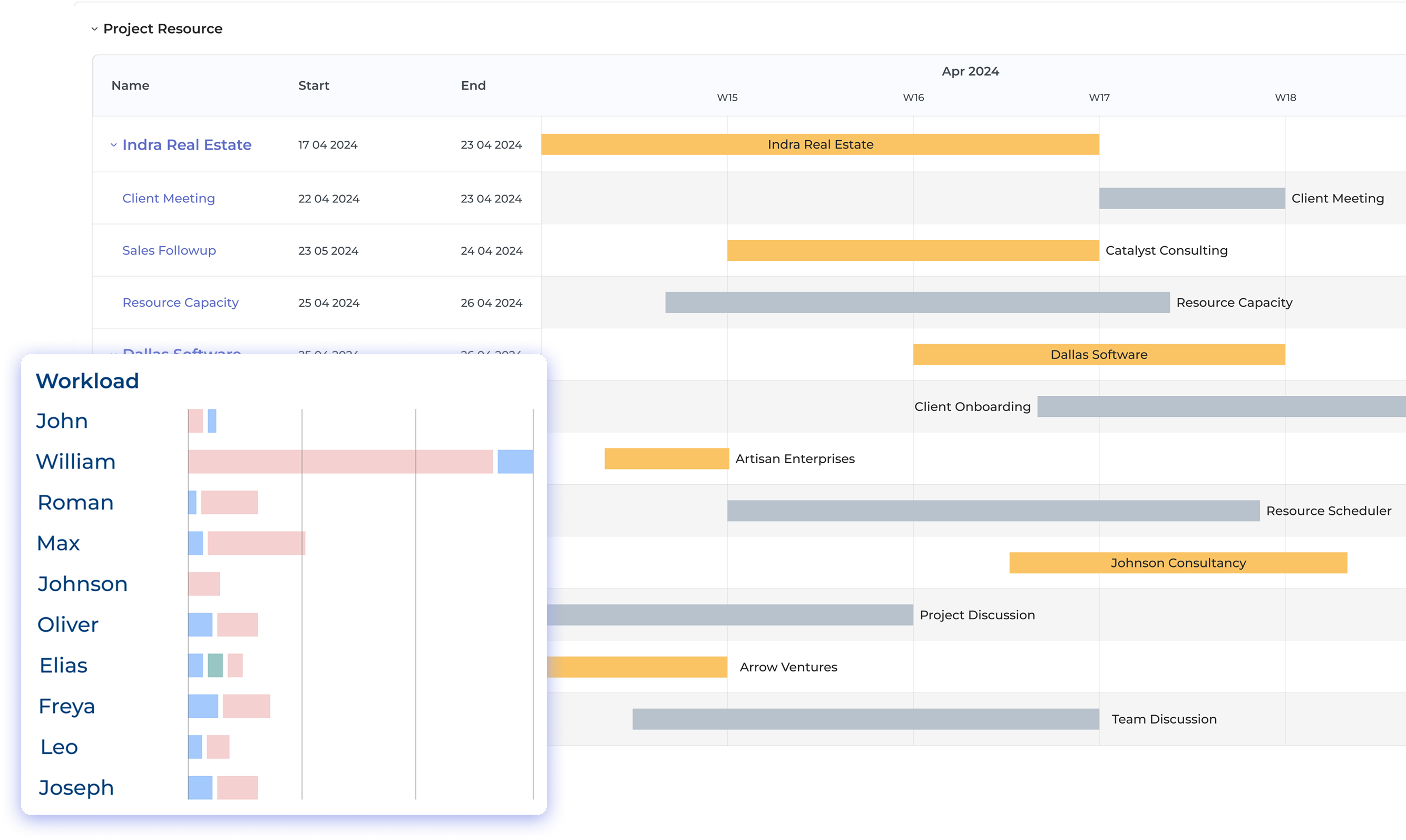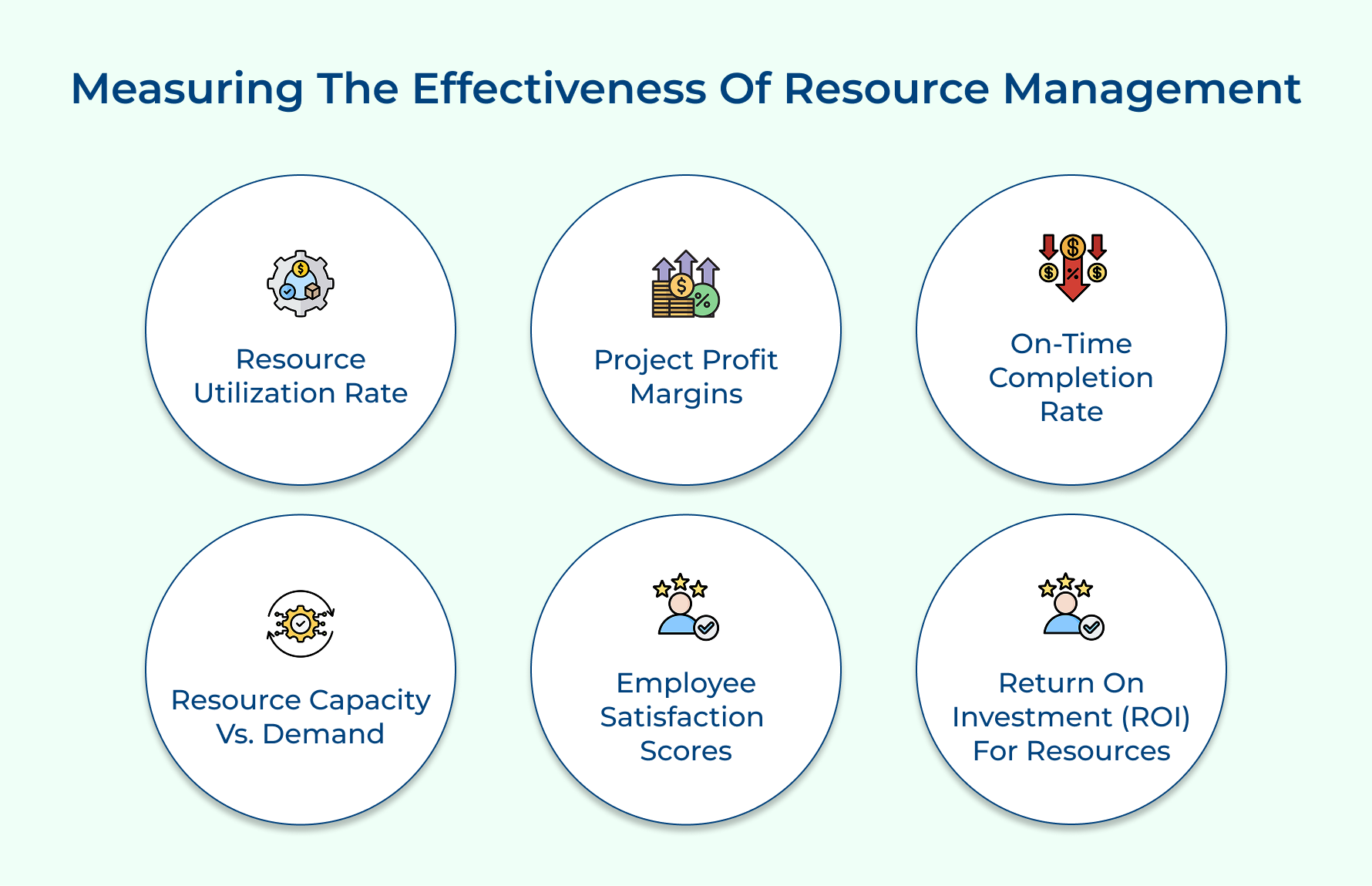1. Implement a Centralized Resource Management System
A centralized system provides a single source of truth for resource data, eliminating inconsistencies and improving decision-making. It enhances visibility across projects and departments, enabling more efficient resource allocation as well as utilization.
Kooper tracks resource availability, skills, and allocations across all projects. It also generates reports as well as dashboards for real-time insights into resource utilization, capacity, and potential conflicts.
Tips:
- Leverage Kooper, a user-friendly system that integrates well with existing tools to ensure adoption.
- Designate a system administrator to maintain data integrity and provide user support.
2. Develop Clear Resource Allocation Processes
Clear processes ensure consistency in resource allocation, reduce conflicts and improve efficiency. They provide a framework for fair and transparent decision-making, aligning resource use with organizational priorities.
Create standardized procedures for requesting, approving, and assigning resources. Use these processes to streamline resource allocation, resolve conflicts as well as ensure optimal use of available resources.
Tips:
- Involve key stakeholders in process development to ensure buy-in and practicality.
- Regularly review and update processes to adapt to changing organizational needs.
3. Prioritize Projects and Tasks Effectively
Effective prioritization ensures that critical projects and tasks receive the necessary resources first. It helps in aligning resource allocation with strategic objectives and maximizes the value generated from limited resources.
Implement a scoring system or prioritization matrix to rank projects and tasks. Use this ranking to guide resource allocation decisions as well as resolve conflicts when resources are constrained.
Tips:
- Establish clear criteria for prioritization that align with organizational goals.
- Regularly review and adjust priorities to reflect changing business conditions.
4. Maintain an Up-to-Date Skills Inventory
A current skills inventory enables better matching of resources to project needs. It helps identify skill gaps, informs training decisions, and supports more efficient resource allocation.
Create and maintain a database of employee skills, certifications, experience, etc. Use this inventory when staffing projects to ensure the right skills are available at the right time.
Tips:
- Implement a regular skills assessment process to keep the inventory current.
- Use skill tagging in your resource management system for easy searching and matching.
5. Build Cross-Functional Collaboration
Cross-functional collaboration enhances knowledge sharing, improves problem-solving, and increases resource flexibility. It allows for more efficient use of resources across different departments or projects.
Implement matrix management structures or create cross-functional teams for projects. Encourage knowledge-sharing sessions and collaborative problem-solving to maximize resource potential.
Tips:
- Use collaboration tools to facilitate communication across departments.
- Recognize and reward successful cross-functional collaborations to encourage the practice.
6. Practice Proactive Capacity Planning
Proactive capacity planning helps avoid resource shortages or excesses. It enables organizations to anticipate future needs, balance workloads, as well as make informed decisions about hiring or training.
Regularly forecast resource needs based on upcoming projects and strategic plans. Use these forecasts to guide hiring decisions, training programs, along resource allocation strategies.
Tips:
- Involve project managers and department heads in capacity planning discussions.
- Use scenario planning to prepare for different possible future resource needs.
7. Regularly Monitor and Analyze Resource Utilization
Regular monitoring helps identify inefficiencies, underutilized resources, and potential bottlenecks. It provides data-driven insights for improving resource allocation and overall productivity.
Track key performance indicators (KPIs) related to resource utilization. Use data analytics tools to identify trends, benchmark performance, and inform resource management decisions.
Tips:
- Develop a set of relevant KPIs that align with organizational goals.
- Use visual dashboards to make utilization data easily understandable and actionable.
8. Implement Resource Leveling and Smoothing Techniques
Resource leveling and smoothing help optimize resource allocation over time. These techniques reduce overallocation, minimize idle time, and create more balanced as well as sustainable workloads.
Apply resource leveling techniques to adjust project schedules and balance resource usage. Use resource smoothing to minimize fluctuations in resource demand while maintaining project deadlines.
Tips:
- Use project management software with built-in leveling and smoothing capabilities.
- Balance the need for optimal resource use with project timeline requirements.
9. Invest in Continuous Training and Development
Continuous training keeps skills current, improves resource flexibility, and enhances employee satisfaction. It helps organizations adapt to changing needs and technologies while retaining valuable talent.
Develop training programs based on identified skill gaps and future needs. Encourage and support employees in pursuing relevant certifications as well as learning opportunities.
Tips:
- Align training initiatives with both organizational needs and individual career goals.
- Implement a learning management system to track and manage training programs.
10. Establish a Feedback Loop for Continuous Improvement
A feedback loop is essential for evaluating the effectiveness of resource management practices, identifying strengths, and addressing areas for improvement. It builds continuous learning and ensures adaptability to evolving needs.
Conducting post-project reviews helps assess resource utilization and overall management efficiency. Regularly gathering feedback from team members and stakeholders further enhances resource allocation strategies as well as operational effectiveness.
Tips:
- Create a safe environment for honest feedback by ensuring anonymity when needed.
- Act on feedback promptly and communicate changes to demonstrate the value of input.
